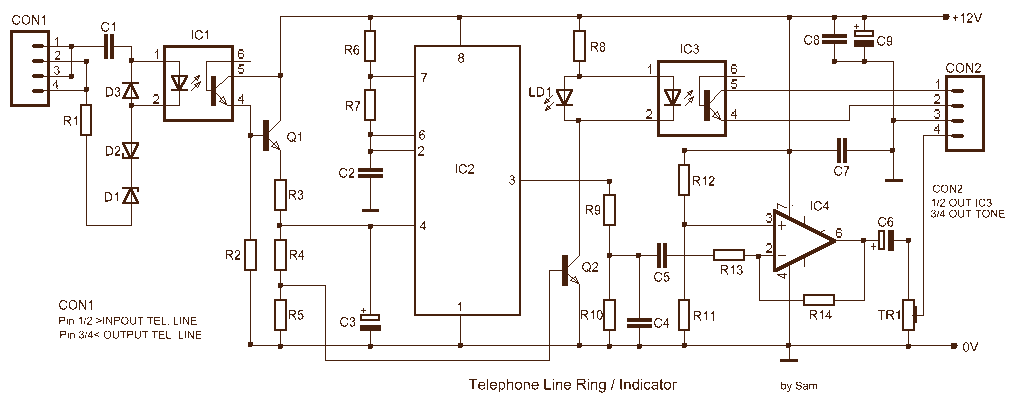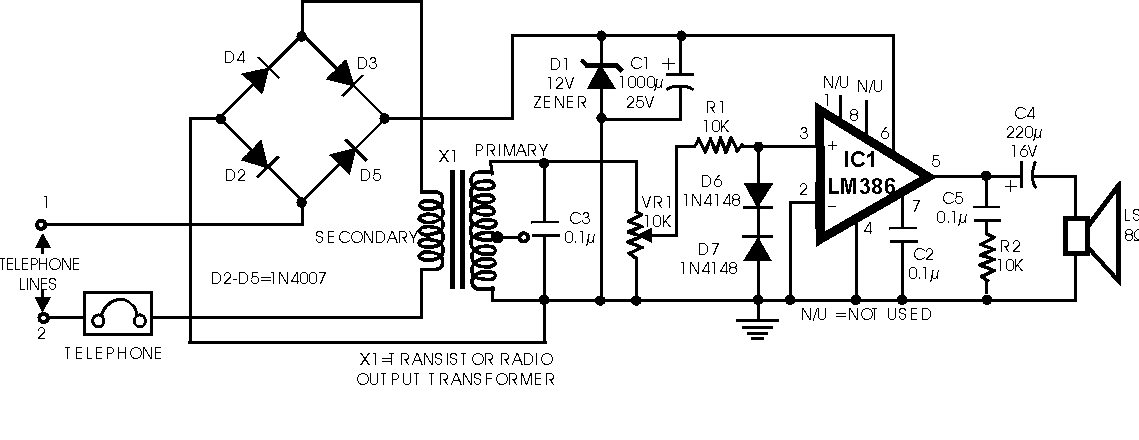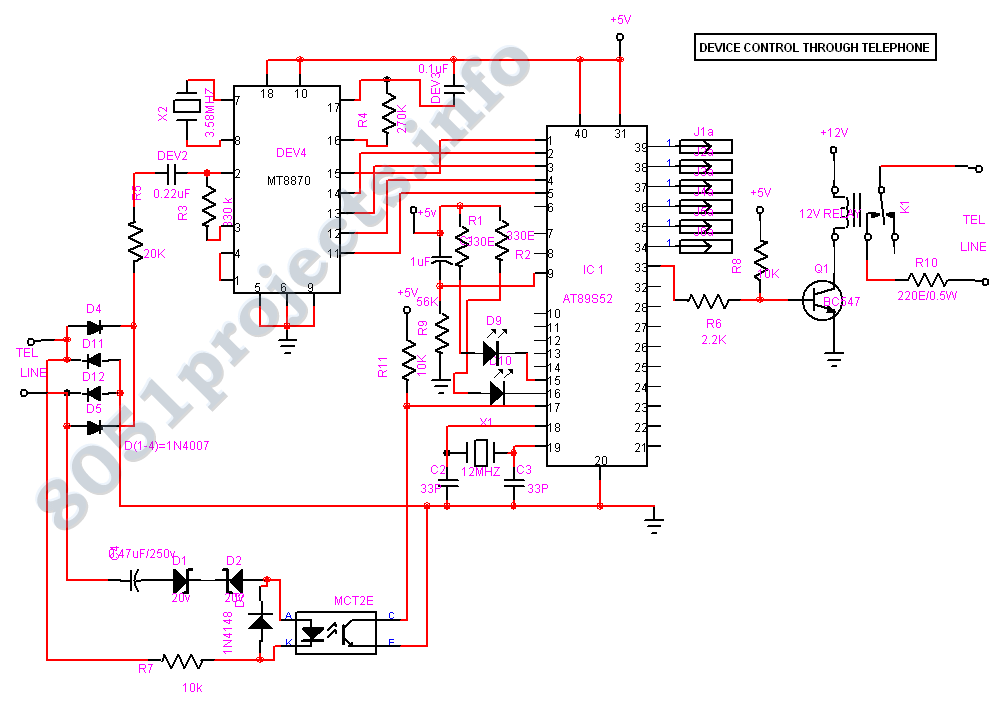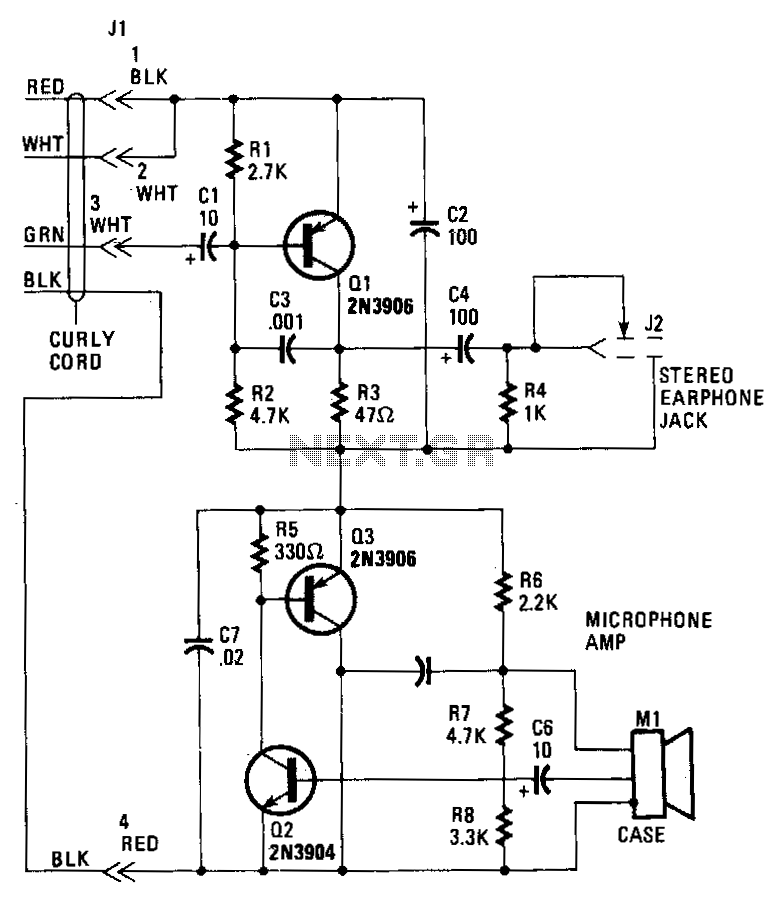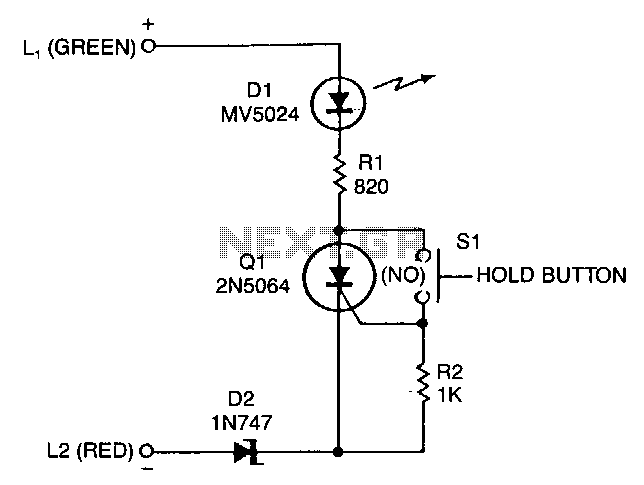
Telephone Message Taker

This circuit operates on the ringing voltage of the telephone to trigger a tape recorder to record messages. It can be made to latch using extra contacts if the tape recorder requires a constant-contact closure.
The circuit utilizes the ringing voltage, typically around 90V AC, present on the telephone line when a call is incoming. A transformer is often employed to step down this voltage to a safer level suitable for triggering the recording device. The primary winding of the transformer is connected to the telephone line, while the secondary winding provides a lower AC voltage output.
A rectifier circuit is integrated to convert the AC voltage from the transformer into a DC voltage. This DC output can then be used to activate a relay or transistor switch, which in turn controls the tape recorder. The relay provides isolation from the high voltage of the telephone line and allows the circuit to operate safely.
In scenarios where the tape recorder requires a constant-contact closure to remain in recording mode, additional contacts can be employed. These contacts can be configured to latch the relay in an active state, ensuring that the tape recorder continues recording until the call is terminated or the circuit is manually reset. This latching mechanism can be achieved using a simple feedback loop or a flip-flop circuit, depending on the complexity required.
To ensure the circuit operates reliably, it is important to include protective components such as diodes to prevent back EMF from damaging the circuit when the relay is deactivated. Additionally, capacitors may be used to filter any noise from the power supply, ensuring clean operation of the tape recorder. Proper component ratings should be considered to handle the expected voltage and current levels throughout the circuit. This circuit operates on the ringing voltage of the telephone to trigger a tape recorder to record messages. Kl can be made to latch using extra contacts if the tape recorder requires a constant-contact closure.
The circuit utilizes the ringing voltage, typically around 90V AC, present on the telephone line when a call is incoming. A transformer is often employed to step down this voltage to a safer level suitable for triggering the recording device. The primary winding of the transformer is connected to the telephone line, while the secondary winding provides a lower AC voltage output.
A rectifier circuit is integrated to convert the AC voltage from the transformer into a DC voltage. This DC output can then be used to activate a relay or transistor switch, which in turn controls the tape recorder. The relay provides isolation from the high voltage of the telephone line and allows the circuit to operate safely.
In scenarios where the tape recorder requires a constant-contact closure to remain in recording mode, additional contacts can be employed. These contacts can be configured to latch the relay in an active state, ensuring that the tape recorder continues recording until the call is terminated or the circuit is manually reset. This latching mechanism can be achieved using a simple feedback loop or a flip-flop circuit, depending on the complexity required.
To ensure the circuit operates reliably, it is important to include protective components such as diodes to prevent back EMF from damaging the circuit when the relay is deactivated. Additionally, capacitors may be used to filter any noise from the power supply, ensuring clean operation of the tape recorder. Proper component ratings should be considered to handle the expected voltage and current levels throughout the circuit. This circuit operates on the ringing voltage of the telephone to trigger a tape recorder to record messages. Kl can be made to latch using extra contacts if the tape recorder requires a constant-contact closure.
